This article will specifically focus on Wall-to-wall Carpet Glossary, which is part of Zarif Carpets‘ collection of articles related to wall-to-wall carpets. Discover more articles related to the subject on our ‘All About Wall-to-wall Carpet‘ page.
If you are not familiar with the topic of wall-to-wall carpets, we recommend checking out our guide ‘Wall-to-wall Carpets: What You Should Know‘ first.
What Will You Read?
Like other industries, the wall-to-wall carpet industry has its own terms, technical words, and language. In this article, we will delve into these terms and describe exactly what each one means:
Wall-to-wall Carpet Glossary
| Word | Defination |
|---|---|
| Carpet |
“carpet” refers to two different types: wall-to-wall carpet and rug. Wall-to-wall carpet is a type of carpet that covers the entire floor, from one wall to another, while a rug covers a specific area. |
| Wall-to-wall Carpet |
As mentioned earlier, wall-to-wall carpet is a flooring option that covers the entire floor, reaching from one wall to the opposite wall. It is also known as fitted carpet, moquette, and broadloom carpet. For more details, check out our article 'Wall-to-wall Carpet: What You Should Know'. 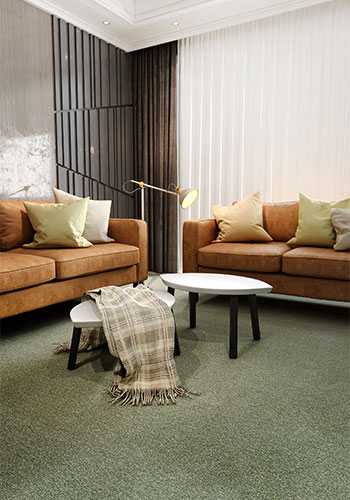 |
| Rug |
'Rug' refers to the traditional type of carpet that we all know: 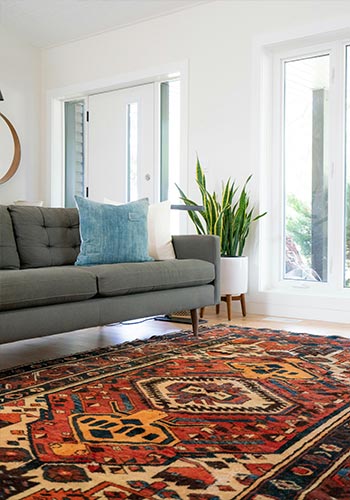 |
| Tufted Carpet |
A tufted wall-to-wall carpet (also known as tufted pile) is a type of carpet that is made by inserting yarn into a backing material. This process creates a soft, textured surface that can be used in both residential and commercial spaces. 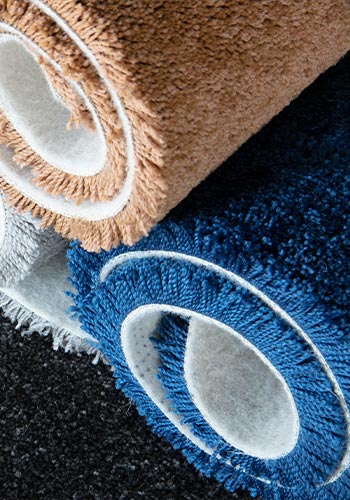 |
| Needle-felt Carpet |
Needle-felt wall-to-wall carpet (also known as nonwoven carpet or felt carpet) is a type of carpet that is made using a special technique called needle felting. In this process, synthetic fibers are mechanically entangled using barbed needles, creating a dense and durable carpet without the need for traditional backing material.  |
| Carpet Tiles |
Carpet tiles are small, individual pieces of carpet that are usually square-shaped. Unlike traditional broadloom carpet that comes in large rolls, carpet tiles are designed to be installed in smaller sections. They are made by cutting full-sized carpets into smaller tiles and adding a stronger backing to them. 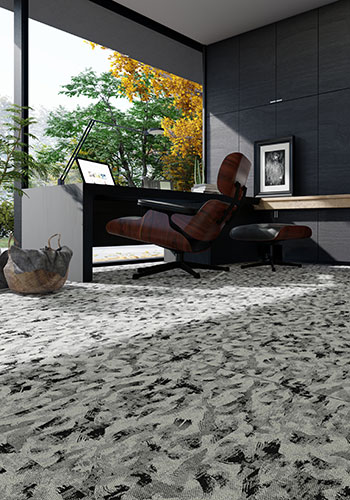 |
| Artificial Grass |
However artificial grass can be categorized as a tufted carpet, we preferred to talk about that as one of the main categories of wall-to-wall carpet for some reasons such as different usage, technical specifications, production process, etc. from tufted carpets. 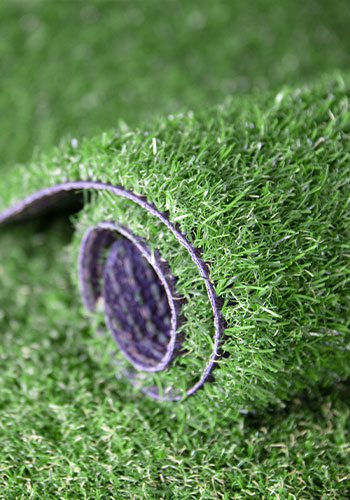 |
| Printed Carpet |
Printed carpet is a variation of carpet featuring patterns or images printed on its surface. 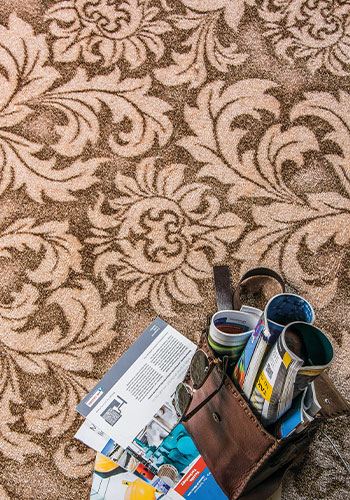 |
| Brocaded Carpet |
A brocaded carpet is created by adding a pattern to the carpet through a brocading process. 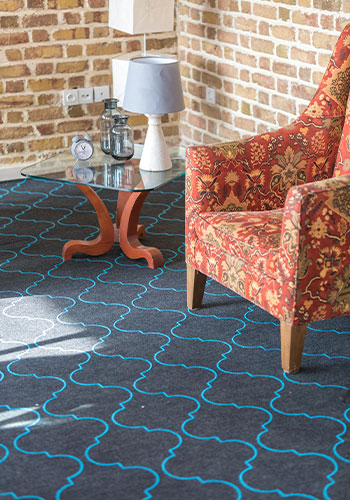 |
| Embossed Carpet |
An embossed carpet is a type of wall-to-wall carpet crafted by heating and pressuring felt with a specific pattern. 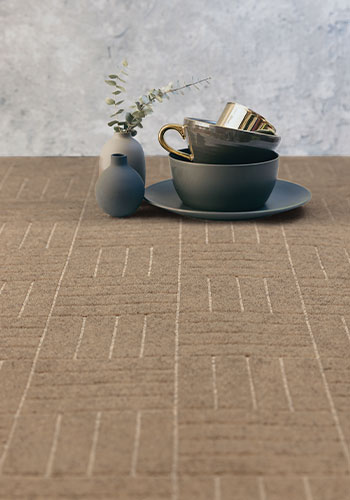 |
| Needle Punched Carpet |
Needle-punched carpet is similar to embossed carpet, but instead of using heat, it is crafted by applying pressure to carpet with a specific pattern. 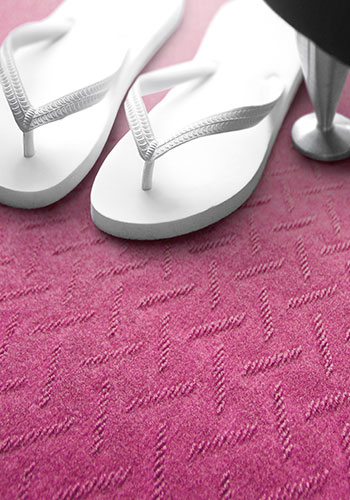 |
| Cut Carpet |
'Cut' or 'Cut Pile' is a type of tufted carpet where the surface of the carpet is cut. The following image shows the structure of a cut carpet in more detail: 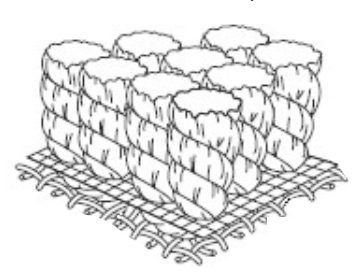 |
| Loop Carpet |
'Loop' or 'Loop Pile' is a type of tufted carpet where the surface of the carpet is looped. The following image shows the structure of a loop carpet in more detail: 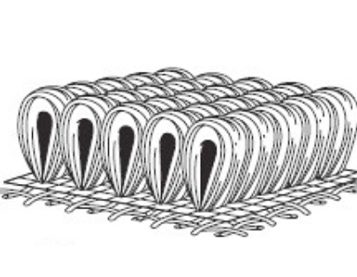 |
| Yarn |
'Yarn' in the context of carpet, refers to the continuous strand of textile fibers or filaments used to construct the carpet's surface. |
| Pile |
The term 'pile' refers to the visible surface layer of the carpet, consisting of loops or cut fibers that stand upright from the backing material. The pile is what you see and feel when you walk on the carpet. |
| Gauge |
The number of stitches per inch in a wall-to-wall carpet is called the gauge. |
| Anti-slip Carpet |
An anti-slip or slip-resistant carpet is a type of carpeting designed to minimize the risk of slipping or skidding, providing increased traction and stability. |
| Color Fastness |
Color Fastness to Artificial Light is a measure of a carpet’s resistance to fading or color change when exposed to artificial light sources. |
| Anti-static Carpet |
An anti-static carpet is designed to reduce or eliminate the buildup of static electricity. |
| Fire Retardant Carpet |
Fire retardancy in carpets refers to the ability of a carpet to resist ignition and slow down the spread of flames in the event of a fire. |
| Castor Chair Suitability |
The Castor Chair Suitability feature for carpets refers to the carpet’s ability to withstand the movement of office chairs with castor wheels. |
| Dimensional Stability |
The dimensional stability feature for carpets refers to the ability of a carpet to maintain its original size and shape over time, despite environmental conditions and usage. |
| Fraying-resistance |
The fraying-resistance feature for carpets refers to the carpet’s ability to resist fraying or unraveling along the edges. |
| Noise Reduction |
The noise reduction feature for carpets refers to their ability to absorb and dampen sound, contributing to a quieter and more acoustically comfortable environment. |
| Green Carpet |
'Green Carpet' refers to a sustainable and eco-friendly carpet. |
| Fiber |
In the textile industry, “Fiber” refers to the basic unit of raw material from which textiles are made. Fibers are slender, thread-like structures that can be natural or synthetic. They are used to create yarns and fabrics. |
| Staple Fiber |
Staple fiber is a term used in the textile industry to describe a type of fiber that is relatively short in length compared to continuous filament fibers (staple fiber and filament fibers are opposite terms). These fibers are typically measured in inches or millimeters, whereas continuous filament fibers can be much longer, extending for thousands of meters. For more details, check out our article 'Staple Fiber: What You Should Know'. 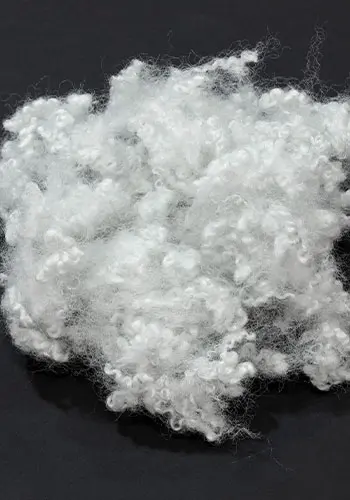
|
| Denier Grade |
In the context of fibers, denier grade refers to the thickness of a strand. A higher thickness corresponds to a higher denier grade. This feature is measured by a special unit named Denier, represented by the letter ‘D’. |
| Cut Length |
Cut length refers to the length of a strand of staple fiber. This specification is not used for filament fibers, as they are continuous. Cut length is typically measured in millimeters. |
| Recycled Fiber |
When we use recycling processes for manufacturing fibers, the final fiber is called recycled fiber. |
| Virgin Fiber |
Virgin fiber is the opposite of recycled fiber; this type of fiber is not obtained from recycled material. |
| Hollow Fiber |
Hollow fiber is a type of fiber that has a hollow area in the middle of the strand. For more details, check out our article 'Hollow Staple Fibers: What You Should Know'. |
Final Words
We believe this article will help you get more familiar with the terms of wall-to-wall carpets, this information especially would be useful when purchasing a carpet or when you are new in this field.
Stay informed about the latest Zarif Carpets’ moquettes and other products by following our LinkedIn page.

